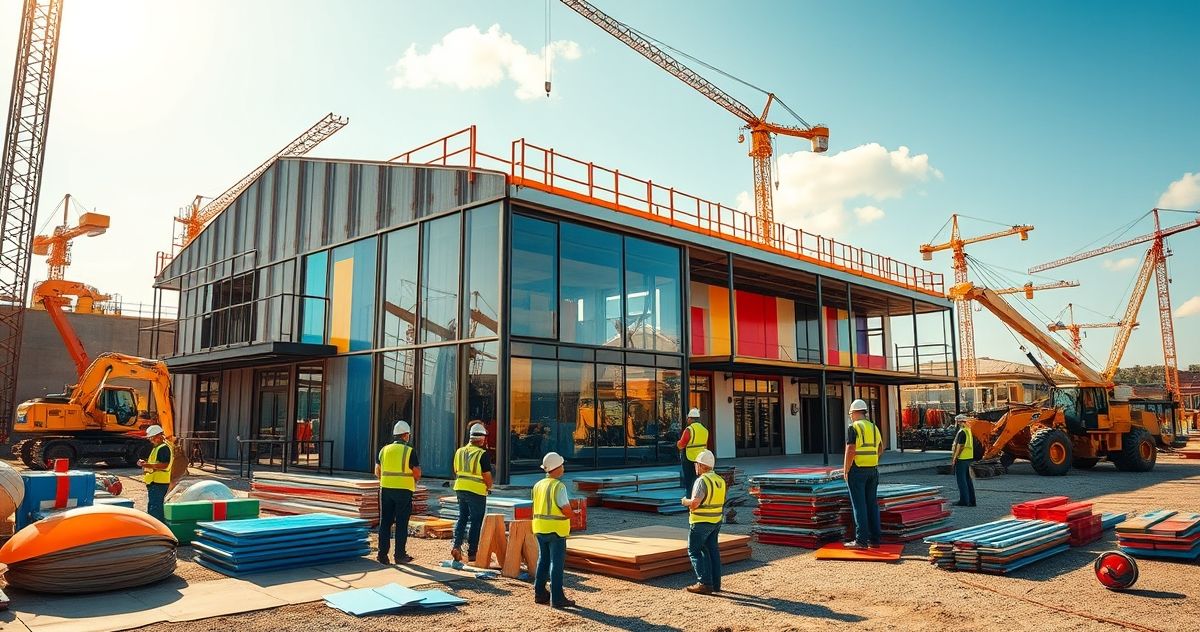Understanding the Childcare Facility Construction Credit
The Childcare Facility Construction Credit is a tax incentive aimed at encouraging businesses to invest in the development and construction of childcare facilities. By providing a tax credit, this initiative supports companies willing to dedicate resources toward creating family-friendly workplaces. This benefit not only aids businesses in offsetting the financial burden associated with building childcare facilities but also contributes to broader goals of workforce retention and participation, particularly for working parents.
What It Is and Its Primary Purpose
The primary aim of the Childcare Facility Construction Credit is to support businesses in their efforts to provide employees with accessible childcare options. This credit functions as a financial incentive, allowing businesses to reduce their tax liability by a certain percentage of the expenditures used in constructing or expanding onsite childcare facilities. The overarching goal is to alleviate some of the financial responsibilities businesses face in providing essential support for working parents, in turn, promoting greater workforce participation and enhancing employee satisfaction and retention.
Key Features or Components
- Tax Credit Percentage: The credit typically covers a certain percentage of the facility construction costs, offering substantial savings for qualifying expenses.
- Eligible Expenditures: Costs related to construction, renovation, or expansion of childcare facilities are generally eligible. This may include building materials, labor, design fees, and related infrastructure improvements.
- Onsite Requirement: In many cases, to qualify for the credit, businesses must ensure the facilities are located on-site or at a location easily accessible to employees, promoting convenience and proximity.
Relevant Filing or Compliance Requirements
Businesses intending to claim the Childcare Facility Construction Credit must adhere to specific filing and compliance protocols:
- Documentation: Detailed records of all construction-related expenses must be maintained. This includes invoices, contracts, and receipts that clearly outline the costs incurred in developing the childcare facility.
- Certification: Often, projects need to be certified or pre-approved by relevant state or federal agencies to ensure compliance with applicable standards and regulations.
- Tax Filing: The credit is typically claimed on the business’s annual tax return. Detailed instructions on how to claim the credit are usually available on the IRS or local tax authority’s guidance documents.
Penalties or Consequences for Non-Compliance
Non-compliance with the requirements associated with the Childcare Facility Construction Credit can lead to several repercussions:
- Denial of Credit: Failure to provide adequate documentation or non-compliance with standards may result in disqualification from claiming the credit.
- Repayment Obligations: If a business is found to have claimed the credit improperly, it may be responsible for repaying the credit amount, potentially with added penalties and interest.
- Audits and Reviews: Misuse or misreporting related to the credit can trigger audits or further scrutiny of the business’s tax filings, leading to possible legal and financial consequences.
Importance in Tax Resolution and General Financial Compliance
The Childcare Facility Construction Credit plays a crucial role in both tax resolution and financial compliance by providing structured guidance on how businesses can offset costs associated with establishing childcare solutions. For companies seeking to enhance their employee offerings while maintaining fiscal responsibility, this credit serves as a pivotal tool in financial planning and economic strategy development.
The credit not only lessens the monetary burden on businesses aiming to support working parents but also aligns with broader organizational objectives of creating inclusive and supportive work environments. By facilitating access to childcare, companies can improve their workforce’s efficiency, satisfaction, and retention rates, ultimately contributing positively to the broader economic framework.
Furthermore, adhering to the compliance requirements for this credit establishes a precedent of meticulous financial management and regulatory adherence, which can bolster a company’s reputation and operational integrity. Utilizing such credits strategically can ensure a balanced approach to managing both immediate fiscal responsibilities and long-term investment in human capital.
Overall, the Childcare Facility Construction Credit is not just a financial boon but a strategic asset that, when used correctly, can help businesses thrive in an increasingly competitive marketplace while meeting essential social responsibilities.

